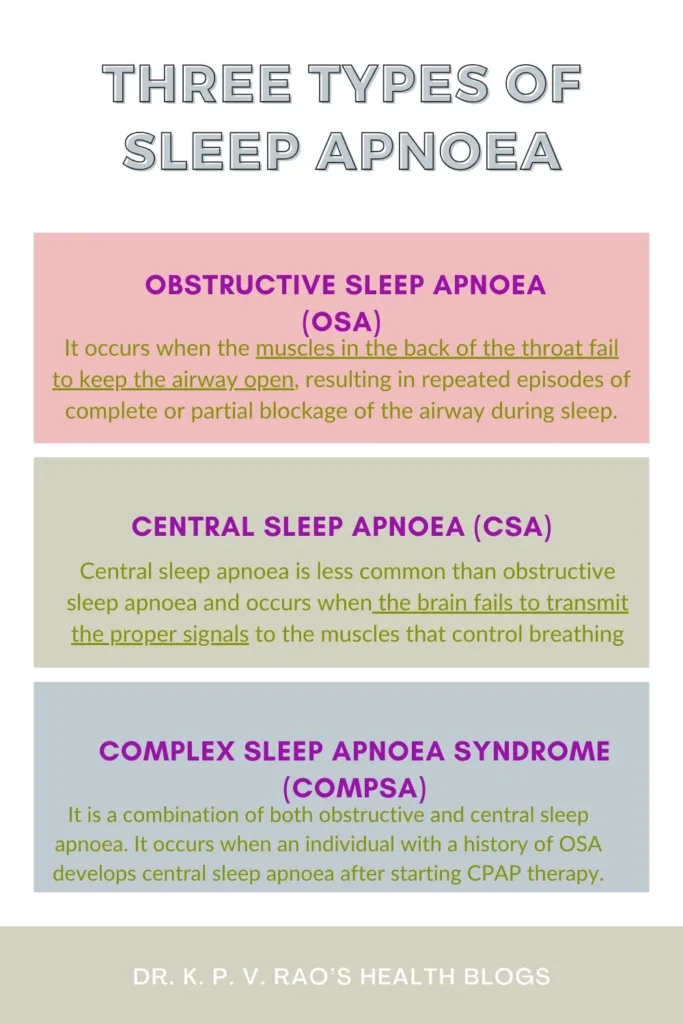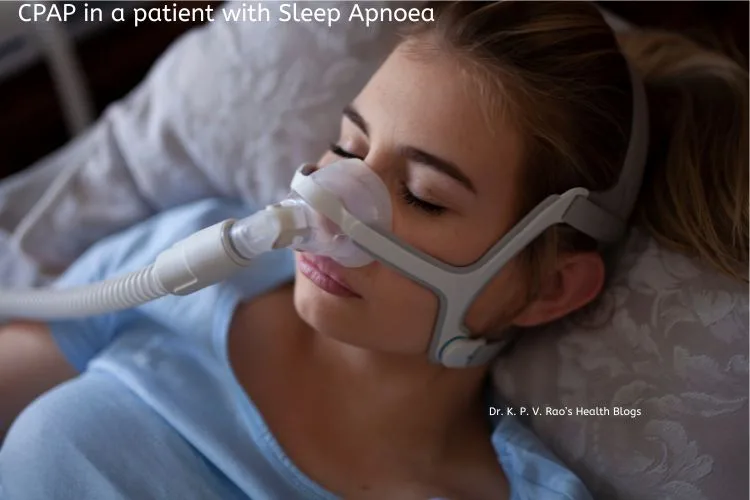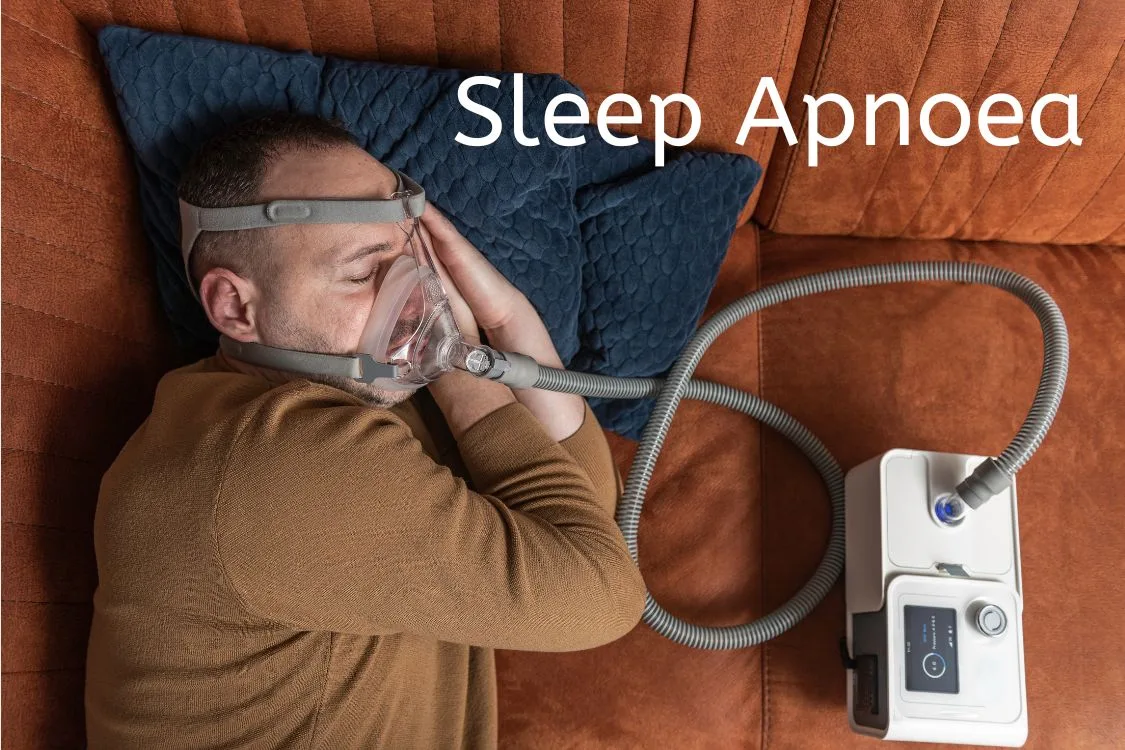Table of Contents
The Different Types of Sleep Apnoea and Their Impact on Health
Introduction
Sleep apnoea is a common sleep disorder that affects millions of people worldwide. It is characterized by pauses in breathing or shallow breaths during sleep [as shown in the video below], leading to disrupted sleep patterns and a variety of health issues.
Wordwide Statistics
Shown below is a statistics of exact number of sleep apnoea cases countrywise of top ten countries-
| Countries | Number of Cases |
| 1. United States | 22 million cases |
| 2. India | 13.7 million cases |
| 3. China | 12 million cases |
| 4. Brazil | 6.4 million cases |
| 5. Germany | 5 million cases |
| 6. Mexico | 4.9 million cases |
| 7. United Kingdom | 4.5 million cases |
| 8. France | 4.2 million cases |
| 9. Italy | 4 million cases |
| 10. Spain | 3.8 million cases |
There are three main types of sleep apnoea, each with its own distinct characteristics and potential health consequences.

1. Obstructive Sleep Apnoea (OSA)
Obstructive sleep apnoea is the most common type of sleep apnoea, accounting for approximately 84% of all cases. It occurs when the muscles in the back of the throat fail to keep the airway open, resulting in repeated episodes of complete or partial blockage of the airway during sleep.
Impact on health
OSA can have a significant impact on overall health and well-being. Repeated interruptions in breathing can lead to
- fragmented sleep,
- daytime sleepiness, and
- fatigue.
It has also been linked to an increased risk of cardiovascular problems, including high blood pressure, heart disease, and stroke. Additionally, OSA has been associated with a higher likelihood of developing type 2 diabetes, obesity, and depression.
Research studies have shown that treating OSA can have a positive impact on health outcomes.
Continuous positive airway pressure (CPAP) therapy, the most common treatment for OSA, involves wearing a mask over the nose or mouth during sleep.

This mask delivers a constant flow of air, keeping the airway open and preventing apnoea episodes.
Studies have demonstrated that CPAP therapy can improve sleep quality, reduce daytime sleepiness, and lower the risk of associated health conditions.
2. Central Sleep Apnoea (CSA)
Central sleep apnoea is less common than obstructive sleep apnoea and occurs when the brain fails to transmit the proper signals to the muscles that control breathing. Unlike OSA, CSA is not caused by a physical obstruction of the airway.
Impact on health
CSA can have a significant impact on the body’s oxygen levels and sleep quality. It is often associated with underlying health conditions such as
- heart failure,
- stroke, or
- brainstem damage.
The symptoms of CSA are similar to those of OSA, including daytime sleepiness, fatigue, and difficulty concentrating.
Treatment options for CSA vary depending on the underlying cause. In some cases, addressing the underlying health condition may help alleviate the symptoms of CSA. Other treatment options may include the use of adaptive servo-ventilation (ASV) devices or medications to stimulate breathing.
3. Complex Sleep Apnoea Syndrome (CompSA)
Complex sleep apnoea syndrome, also known as mixed sleep apnoea, is a combination of both obstructive and central sleep apnoea. It occurs when an individual with a history of OSA develops central sleep apnoea after starting CPAP therapy.
CompSA can be challenging to treat, as it requires addressing both the obstructive and central components of the disorder. Treatment options may include adjusting the CPAP settings, using a different type of positive airway pressure device, or exploring alternative therapies such as positional therapy or oral appliances.
What the research say-
Research studies have shown that untreated sleep apnoea, regardless of the type, can have serious implications for overall health.
It has been linked to an increased risk of cardiovascular disease, metabolic disorders, cognitive impairment, and even accidents due to daytime sleepiness.
Seeking proper diagnosis and treatment for sleep apnoea is crucial in order to mitigate these risks and improve overall well-being.
Conclusion
In conclusion, sleep apnoea is a sleep disorder that can have a significant impact on health and well-being. Understanding the different types of sleep apnoea and their potential consequences is essential for early detection and appropriate treatment.
If you suspect that you or someone you know may be experiencing symptoms of sleep apnoea, it is important to consult with a healthcare professional for a proper diagnosis and personalized treatment plan.
Resources on Sleep Apnoea
For more information and research studies on sleep apnoea and its effects on health, you may refer to the following resources:
- Study on the impact of sleep apnoea on cardiovascular health
- Research on the association between sleep apnoea and type 2 diabetes
- Study on the relationship between sleep apnoea and obesity
- Research on the impact of sleep apnoea on cognitive function
If you have a Twitter account, you can click on a similar article that I wrote about sleep apnoea – https://x.com/viva6756/status/1786236379569262703
Final words
I hope you have understood the importance of this topic on Sleep Apnoea.
My next topic will be on a food item that I consider as a good source of proteins for the vegetarians and vegans among my readers as also for meat lovers who love a change in their diet- TOFU.
Get notified whenever a new article is published on this website by clicking the 🔔 icon in this article.
If you have found this article useful, do share it with your friends and groups on social media shown at the bottom of the article. You can also Click to Tweet here-
Understanding the Impact of Sleep Apnoea on Health Share on XAdios.

